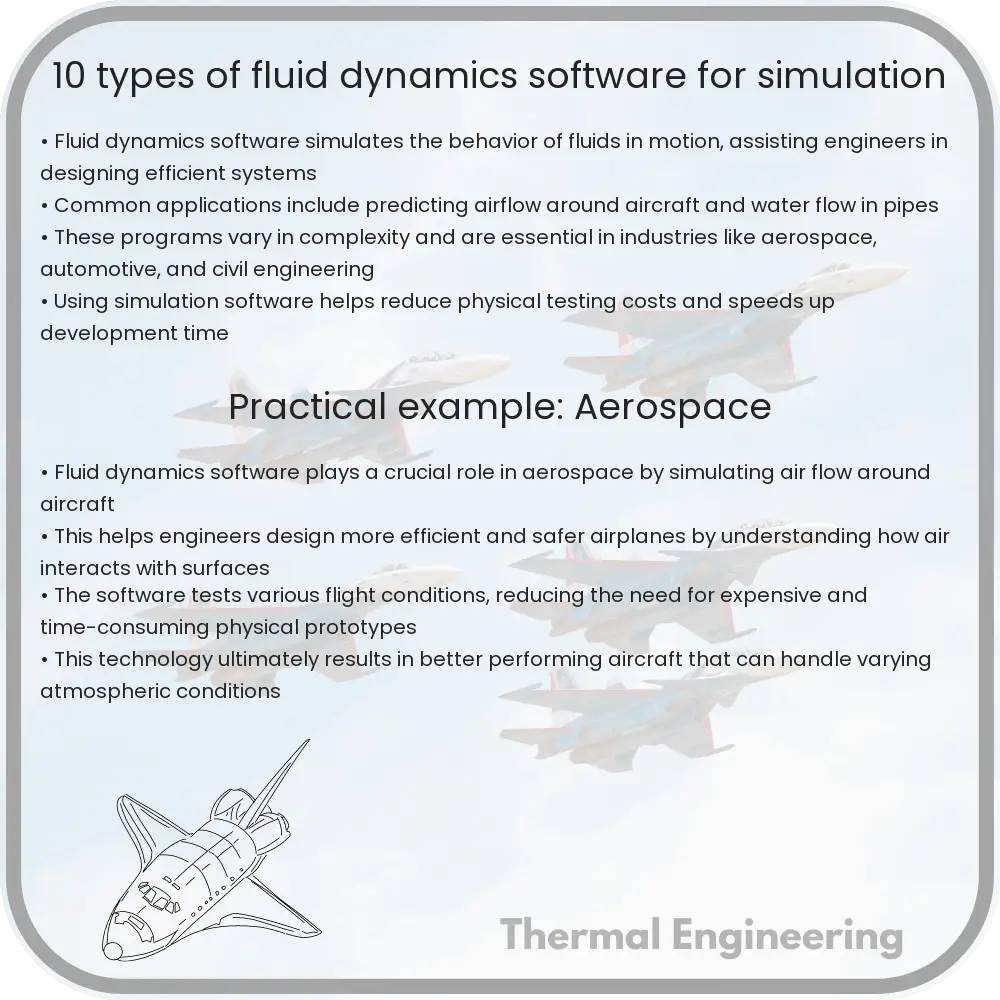Explore ten key types of fluid dynamics simulation software used in various industries to optimize performance and solve complex problems.

10 Types of Fluid Dynamics Software for Simulation
Fluid dynamics is an essential branch of physics and engineering, dealing with the behavior of fluids in motion. It covers a wide range of applications, from designing efficient aircraft wings to predicting weather patterns. To study fluid flow, scientists and engineers use a variety of computational fluid dynamics (CFD) software tools. These programs allow for the detailed simulation of fluid behavior under different conditions, helping to optimize performance and solve complex fluid-related problems. Here are ten notable types of fluid dynamics simulation software commonly used in various industries.
1. ANSYS Fluent
ANSYS Fluent is a powerful computational fluid dynamics software known for its advanced physics modeling capabilities. It allows users to predict fluid flow, heat transfer, and chemical reactions in complex geometries.
2. SimScale
SimScale is a cloud-based CFD and FEA platform that allows engineers to simulate fluid dynamics, thermodynamics, and structural properties. Its cloud-based nature means it’s accessible anytime, anywhere, without high hardware requirements.
3. Autodesk CFD
Autodesk CFD provides computational fluid dynamics and thermal simulation tools that can help predict product performance, optimize designs, and validate product behavior before manufacturing.
4. OpenFOAM
OpenFOAM is an open-source software used extensively in academia and industry for solving complex fluid dynamics problems. It offers extensive features for customizability and can be used for simulations involving fluid flow, turbulence, heat transfer, and more.
5. COMSOL Multiphysics
COMSOL Multiphysics is known for its flexibility, allowing users to simulate almost any physics-based system including fluid dynamics. It includes modules that cater specifically to fluid applications, making it versatile for multi-disciplinary studies.
6. STAR-CCM+
STAR-CCM+ from Siemens is widely regarded for its robustness in solving multidisciplinary problems involving fluid dynamics, heat transfer, and chemical reactions. It integrates well with other Siemens software, enhancing workflow integration.
7. CONVERGE
CONVERGE is particularly popular in the automotive industry. It features innovative autonomous meshing, eliminating the need to manually create grid meshes, and efficiently handles moving boundaries and fluid-structure interactions.
8. SU2
SU2 is another open-source option developed primarily for aerodynamic analysis and design. It supports a variety of compressible and incompressible flows and offers tools for shape optimization.
9. Flow-3D
Flow-3D specializes in free-surface flow modeling, making it ideal for applications like water treatment, coastal engineering, and metal casting. Its TruVOF method accurately tracks the shape of fluid surfaces.
10. Phoenix Analysis & Design Technology (PADT)
PADT is used in the development process for a range of fluid flow scenarios. It provides detailed analysis capabilities and tools for optimizing designs in real-world applications.
Each of these CFD software packages has unique strengths, making them suitable for specific types of fluid dynamics analyses and applications. Whether in academia or industry, leveraging the right tool can provide significant insights and advancements in technology and processes involving fluid flows.